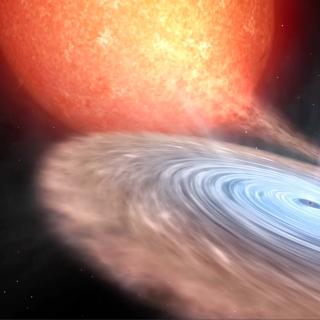Bibcode
Antunes Amaral, L.; Munday, J.; Vučković, M.; Pelisoli, I.; Németh, P.; Zorotovic, M.; Marsh, T. R.; Littlefair, S. P.; Dhillon, V. S.; Brown, A. J.
Bibliographical reference
Astronomy and Astrophysics
Advertised on:
5
2024
Journal
Citations
1
Refereed citations
1
Description
In recent years, about 150 low-mass white dwarfs (WDs), typically with masses below 0.4 M⊙, have been discovered. The majority of these low-mass WDs are observed in binary systems as they cannot be formed through single-star evolution within Hubble time. In this work, we present a comprehensive analysis of the double low-mass WD eclipsing binary system J2102−4145. Our investigation encompasses an extensive observational campaign, resulting in the acquisition of approximately 28 h of high-speed photometric data across multiple nights using NTT/ULTRACAM, SOAR/Goodman, and SMARTS-1m telescopes. These observations have provided critical insights into the orbital characteristics of this system, including parameters such as inclination and orbital period. To disentangle the binary components of J2102−4145, we employed the XTGRID spectral fitting method with GMOS/Gemini-South and X-shooter data. Additionally, we used the PHOEBE package for light curve analysis on NTT/ULTRACAM high-speed time-series photometry data to constrain the binary star properties. Our analysis unveils remarkable similarities between the two components of this binary system. For the primary star, we determine Teff,1 = 13 688−72+65 K, log g1 = 7.36 ± 0.01, R1 = 0.0211 ± 0.0002 R⊙, and M1 = 0.375 ± 0.003 M⊙, while, the secondary star is characterised by Teff,2 = 12952−66+53 K, log g2 = 7.32 ± 0.01, R2 = 0.0203−0.0003+0.0002 R⊙, and M2 = 0.314 ± 0.003 M⊙. Furthermore, we found a notable discrepancy between Teff and R of the less massive WD, compared to evolutionary sequences for WDs from the literature, which has significant implications for our understanding of WD evolution. We discuss a potential formation scenario for this system which might explain this discrepancy and explore its future evolution. We predict that this system will merge in ∼800 Myr, evolving into a helium-rich hot subdwarf star and later into a hybrid He/CO WD.
Related projects

Black holes, neutron stars, white dwarfs and their local environment
Accreting black-holes and neutron stars in X-ray binaries provide an ideal laboratory for exploring the physics of compact objects, yielding not only confirmation of the existence of stellar mass black holes via dynamical mass measurements, but also the best opportunity for probing high-gravity environments and the physics of accretion; the most
Montserrat
Armas Padilla